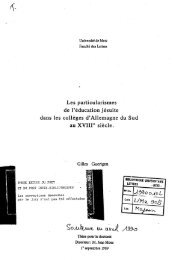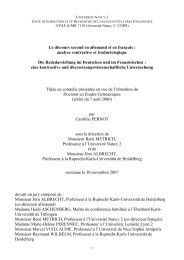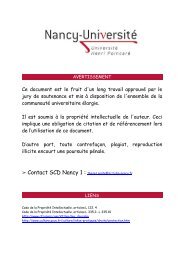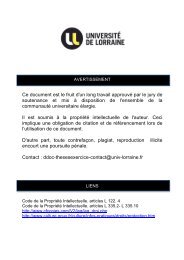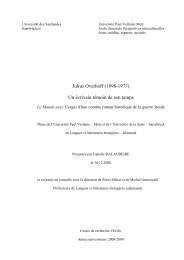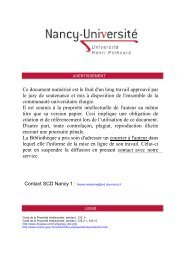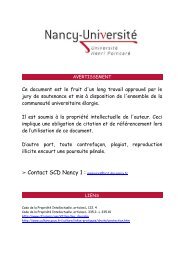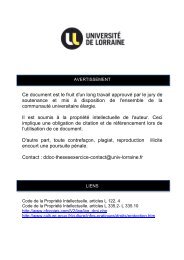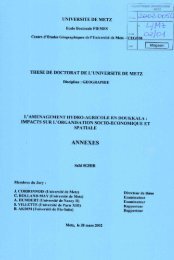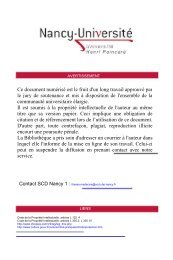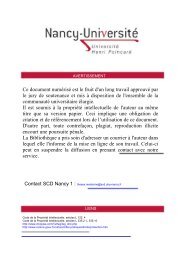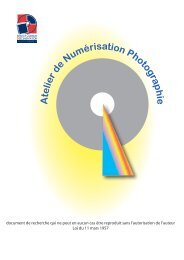Mécanismes d'évolution de texture au cours du recuit d'alliages de ...
Mécanismes d'évolution de texture au cours du recuit d'alliages de ...
Mécanismes d'évolution de texture au cours du recuit d'alliages de ...
Create successful ePaper yourself
Turn your PDF publications into a flip-book with our unique Google optimized e-Paper software.
précé<strong>de</strong>mment (60% <strong>de</strong> ré<strong>du</strong>ction).<br />
a) Début <strong>de</strong> la croissance anormale<br />
DT 0<br />
b) après la croissance anormale<br />
Gros grains<br />
(15% surface)<br />
DT 0<br />
DL 0 100µm<br />
DL 0<br />
200µm<br />
Constant Phi1 = 0 Constant Phi1 = 0<br />
Petits grains<br />
(15% surface)<br />
Grains anorm<strong>au</strong>x<br />
(10 grains TGM=130µm)<br />
Reste <strong>de</strong> la microstructure<br />
(4600 grains TGM=22µm)<br />
Figure 6-7: laminage croisé à 80%<br />
microstructure et <strong>texture</strong>s partielles après 24h<br />
<strong>de</strong> <strong>recuit</strong> à 700°C<br />
Chapitre 6: Croissance <strong>de</strong> grains<br />
Constant Phi1 = 0 Calculated PF 002 Calculated PF 100<br />
Constant Phi1 = 0 Calculated PF 002 Calculated PF 100<br />
Figure 6-6: croissance <strong>de</strong> grains dans le cas <strong>du</strong><br />
laminage croisé à 60%:<br />
a) microstructure après 16h <strong>de</strong> <strong>recuit</strong> à 700°C<br />
et <strong>texture</strong> <strong>de</strong>s grains anorm<strong>au</strong>x,<br />
b) <strong>texture</strong>s <strong>de</strong>s petits et gros grains après 24 <strong>de</strong><br />
<strong>recuit</strong> à 700°C<br />
Total <strong>de</strong> la<br />
zone mesurée<br />
Grains<br />
anorm<strong>au</strong>x<br />
(20 grains<br />
TGM=93µm)<br />
Reste <strong>de</strong> la<br />
microstructure<br />
(3892 grains,<br />
TGM=21µm)<br />
Constant Phi1 = 90 Constant Phi1 = 90 Constant Phi1 = 90<br />
Le fait que cette similitu<strong>de</strong> n'ait pas été détectée sur les évolutions <strong>de</strong> <strong>texture</strong> globales<br />
n'est pas surprenant. En effet la déformation initiale ayant été plus forte dans ce cas, la<br />
taille <strong>de</strong> grain achevée en fin <strong>de</strong> recristallisation était plus faible. Il est donc cohérent que<br />
153



